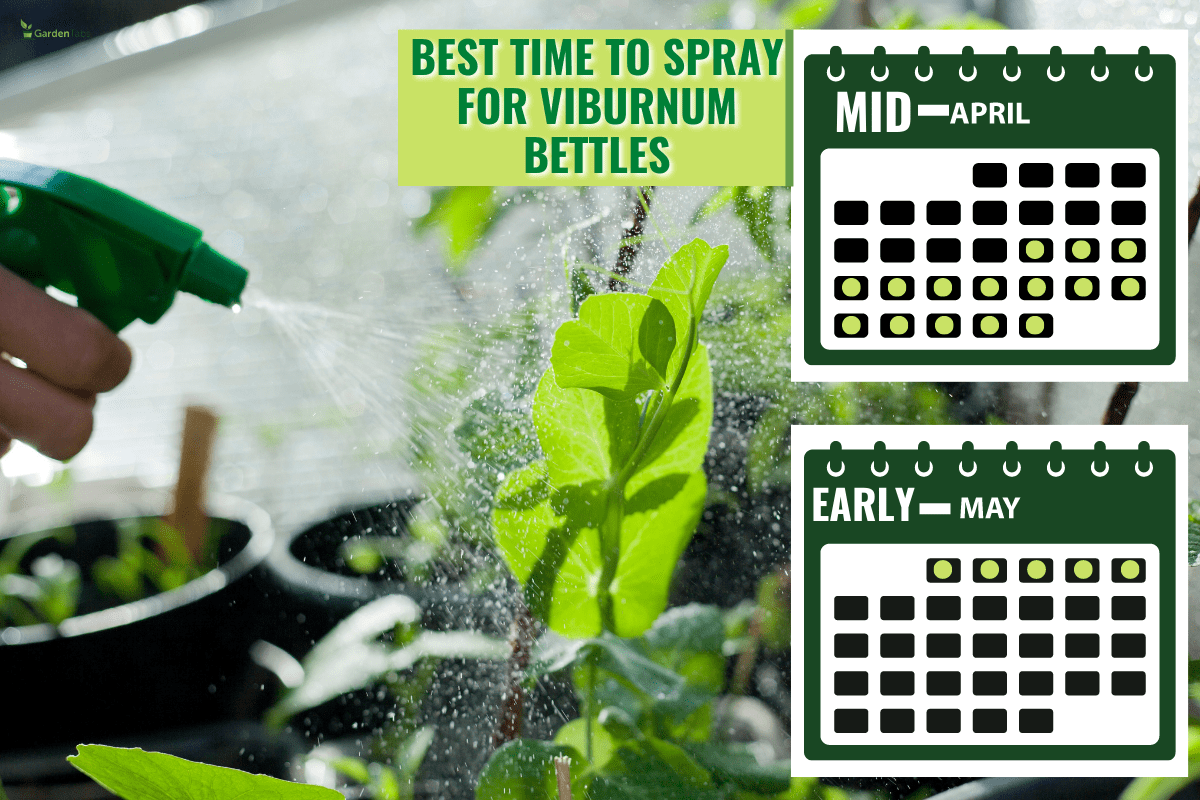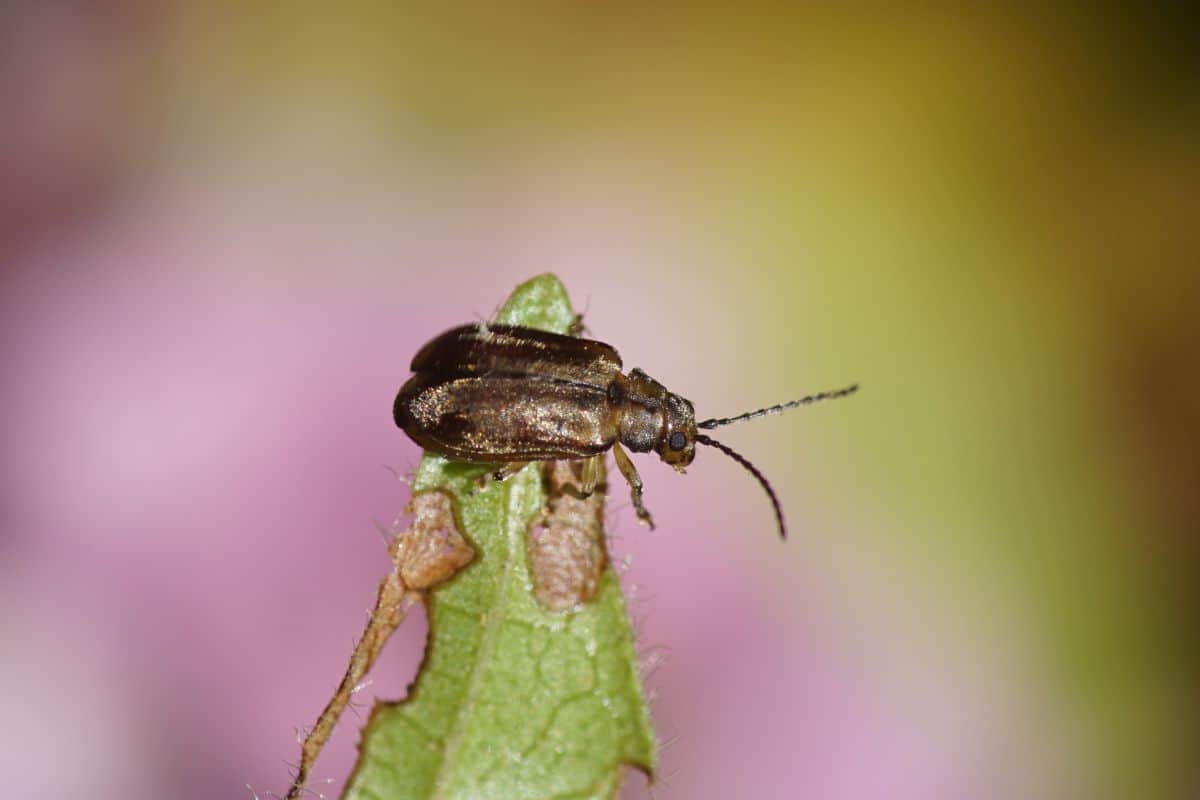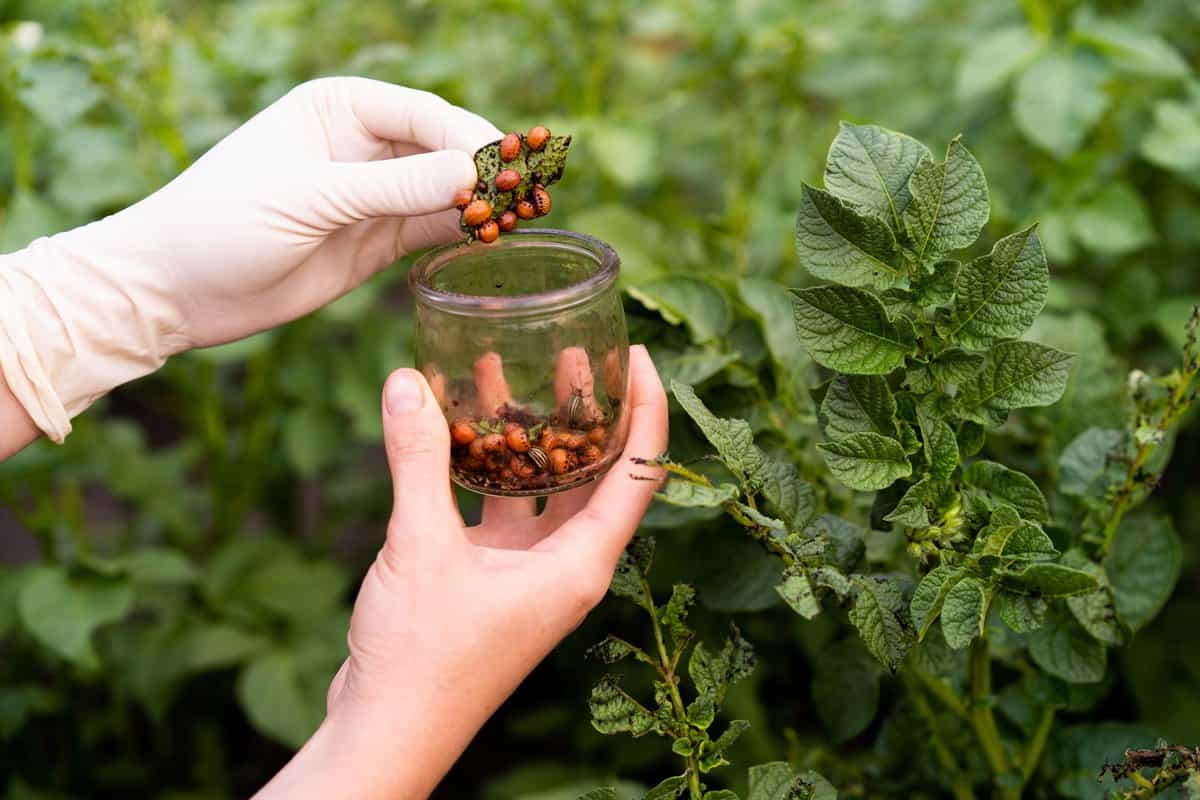Do you have a problem with viburnum beetle infestation? A good spray can easily resolve it, but when is the best time to do it so you can prevent an infestation before it eats away all your leaves? We researched this matter and here's what we found out.
The best time to spray for viburnum bettles is between mid-April and early May. This is the start of springtime when the larvae start feeding.
If you eliminate them at this early stage, you can prevent them from turning into adult beetles which causes bigger damage to your viburnum plants.
Read on below to learn more about the viburnum beetle's life cycle and why the right timing when spraying is very important for pest management.

When Is The Best Time To Spray For Viburnum?

Viburnum leaf beetles are an invasive pest that specifically feeds on viburnum plant species.
When you have an infestation, the viburnum beetle will chew on the leaves creating small holes. Eventually, this will lead to defoliation or the premature and widespread loss of leaves.
Plant owners tend to spray for viburnum beetles once they start seeing adult pests. However, spraying them at this stage means they have already caused significant damage to the plant.
To prevent widespread plant damage, spraying should be done when you see newly emerging larvae. This is because viburnum beetles start feeding early at this stage and can already cause significant damage.
Another thing is, adult beetles are much harder to seek out and control because they tend to fly around. Larvae on the other hand, just stay on the leaves and are easier to locate.
See the picture below for an image of the larvae.
The larvae will feed on the leaves for a few weeks as they pass through three instars or stages of growth. They will eventually grow to a length of 10 to 11 mm long. This pupal stage will last for about 10 days.
Once the larva matures, it will go into the soil and pupate. Later on, it will emerge around June as a fully grown adult viburnum beetle.
The females will lay their eggs during the summer months towards October. They will chew on twigs and lay around 5 to 8 eggs and cover them up with the chewed wood for protection.
One female can lay up to 500 eggs from summer to October. If undisturbed, these eggs will remain in place and overwinter until it's time for them to hatch the following springtime.
Signs Of Infestation
When you see holes with lace-like patterns on your viburnum plant, chances are, the larvae already started feeding on the leaves. It is not easy to spot the larvae compared to the adults because they feed on the underside of the leaf.
If the holes are bigger and oblong in shape, it means that adult viburnum beetles are already feeding on the plant. You will confirm this especially if you see it around the months of June onwards.
What Do You Spray Viburnum Beetle With?

For chemical control of viburnum leaf beetles, you may use products that contain spinosads, insecticidal soaps, pyrethrin, or chlorantraniliprole (acelepryn).
You can use two types of chemical insecticides: contact and systemic. Contact insecticides only work when it comes in direct contact with the pest, while systemic insecticides are absorbed by the plant's system causing it to repel pests and insects.
Spinosads
Spinosad is an organic pesticide from the fungus Saccharopolyspora. It is used as a contact insecticide that can knock back both adult and larvae viburnum beetles without causing damage to beneficial insects in the immediate area.
Below is an example of an insecticide product with spinosad.
View this Monterey spinosad concentrate insecticide on Amazon.
Insecticidal Soaps
Insecticidal soaps are a multipurpose solution for the control of pests in the garden. It is a ready-to-use contact insecticide that can kill viburnum larvae. Unfortunately, it is not strong enough to kill adult viburnum beetles.
Check out this Bonide multipurpose insecticidal soap on Amazon.
Acelepryn
Acelepryn is used for the systemic control of viburnum leaf beetles and other pests and larvae. It is typically used for grass, lawns, and landscapes to kill pests without harming beneficial insects.
Check out this acelepryn suspension concentrate on Amazon.
Pyrethrin
Pyrethrin is an organic compound naturally derived from chrysanthemum flowers. It is used as an insecticide to control and manage various pests and insects, including the viburnum beetle larvae.
Check out this pyrethrin garden insect spray mix on Amazon.
Spraying Precautions
While chemical sprays are effective to get rid of viburnum beetles, it is also important to take precautions to make sure you won't be killing other beneficial insects. For instance, apply only insecticides after flowering so as not to kill pollinators.
Consider using chemical sprays only when you have an infestation. Otherwise, try to use non-chemical means to manage them. Here are some ideas:
- Remove visible larvae by hand by snipping away the leaf and burning them
- Keep birds and other predatory insects around to eat the viburnum beetles
Another way to prevent the presence of viburnum beetles is to prune and destroy twigs that contain the eggs of these beetles. Check around the months of September and October, just before the cold season, if there are eggs laid by the female beetle.
Can You Spray Viburnum Beetles While At The Pupal Stage?
The pupal stage is when the larva has fed itself enough and settles down into the soil to pupate. It may have crossed your mind to kill them at this stage, but unfortunately, you may only damage the plant. Digging up the soil to disturb the pupa will only damage the plant's roots.
The larvae usually crawl down the trunk of the plant and dig into the soil. Some suggest putting a sticky barrier on the trunk to trap and prevent them from going down into the soil to pupate.
Thus, it is better to concentrate on killing the larvae at the beginning stage to prevent them from turning into adults. If some adults emerged, killing them can prevent females from developing eggs.
What Eats Viburnum Beetle?
One way to manage viburnum leaf beetles without using chemical sprays is to keep beneficial insects and animals present that actually prey on them.
Some insects and animals that you should have around and prey on viburnum beetles include:
- lady beetles
- lacewings
- spined soldier bugs
- birds
What if you don't see any of these around your garden? No worries, you can actually contact your local nurseries to purchase some. In fact, some can even be ordered online.
Check out these actual live ladybugs on Amazon.
What To Do After Defoliation?

If your plant experienced a severe beetle attack and defoliation, what should you do? Should you prune the plant or leave it alone after spraying?
If it is only the first or second time the plant has been defoliated, don't worry because your viburnum will leaf out again.
You may choose to prune it or not, but make sure to prune it during the winter months when the plant is dormant. This will give you new and fresh leaf growth come springtime.
If your plant has experienced repeated attacks over the years, then it's possible that your viburnums may be in trouble, especially if it is the variety that is susceptible to infestation.
If you live in an area where these beetles are recurring pests, you may want to choose a viburnum variety that is more resistant to these pests. The resistant hosts include:
- V. sieboldii, Siebold viburnum
- V. setigerum, tea viburnum
- V. rhytidophyllum, leatherleaf viburnum
- V. plicatum var. tomentosum, doublefile viburnum
- V. plicatum, doublefile viburnum
- V. x juddii, Judd viburnum
- V. davidii, David viburnum
- V. carlessi, Koreanspice viburnum
- V. bodnantense, dawn viburnum
How Do I Get Rid Of Beetles Permanently?

Unfortunately, there is no way to completely eradicate viburnum leaf beetles and you can't prevent them from coming back. The best thing you can do is to control and prevent them from spreading by spraying every spring once you see larvae feeding.
Wrapping Up
Both the larvae and adult viburnum beetles are very destructive. It is best to spray them at the start of spring before the larvae turn into adults. Doing so will minimize the damage to your plants.
Thank you very much for taking the time to read all the way through. We hope we were able to answer your question on when to spray for viburnum beetle and prevent it from destroying your plant.
For more pest control tips, check out these other articles below.
Does Grub Control Kill Japanese Beetles?
Where Do Japanese Beetles Go At Night? [And How To Keep Them Away]





